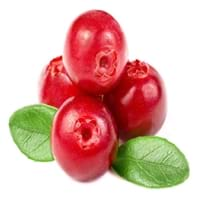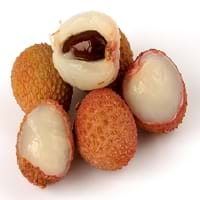Health Benefits
Cancer prevention, Heart care, Kidney stone treatment, Scurvy treatment, Ulcer prevention
Cancer prevention, Cures gastro-intestinal troubles, Heart care, Muscle pain relief, Prevents blindness from diabetes
General Benefits
Anti-inflammatory properties, Boosts immune system, Digestive aid, Fights against infections, Strengthens bones
Boosts immune system, Digestive aid, Fights against infections, Helps in weight loss, Maintains healthy cholesterol level, Strengthens bones
Skin Benefits
Anti-aging benefits, Reduces wrinkles, Skin rejuvenation, Treatment of acne
Anti-aging benefits, Skin rejuvenation
Hair Benefits
Promotes longer and healthier hair, Protects hair, Treatment of dandruff
Promotes longer and healthier hair, Protects hair
Allergy Symptoms
Anaphylaxis, Breathing difficulty, Itching, Skin rash, Swelling of mouth, tongue or lips
Coughing, Diarrhea, Headaches, Hives, Itching, Labored Breathing, Nausea, Runny nose, Swelling of mouth, tongue or lips, Vomiting, Watery eyes
Side Effects
Allergic reaction, Diarrhoea, Nausea, Stomach pain, Vomiting
May cause abdominal pain, Diarrhoea, Mouth irritation, Throat irritation, Weight gain
Best Time to Eat
Any time except an hour after meal, Don't consume at night and before bed
As a snack in the late afternoon, Don't consume at night and before bed, Eat the fresh ones, avoid mixing with any other foods, don't eat after meal., Morning time (before lunch), Strictly avoid empty stomach
Vitamin B5 (Pantothenic Acid)
Vitamin C (Ascorbic Acid)
Vitamin K (Phyllochinone)
Calories in Fresh Fruit with Peel
Not Available
Calories in Fresh Fruit without Peel
Not Available
Type
Berry
Tree fruit, Tropical
Season
Autumn
Spring, Summer
Varieties
Early Black, Howes, Ben Lear and Stevens
Emperor fruit, Mauritiu, Sweet Heart, Brewster, Haak Yip and Bengal
Color
Red
Bright red, Pink red
Inside Color
White
Greyish-white
Taste
Bitter, Tart
Crunchy, Juicy, Sweet
Origin
North America
China, Indonesia, Philippines, Vietnam
Soil Type
Clay, Sandy, Well-drained
Alluvial, Loam, Well-drained
Climatic Conditions
Warm
Absence of strong wind, Cold, Dry, Without frosts
Facts about
- Europeans thought the cranberry blossom looked like the head of a sandhill crane, hence the name Cranberry.
- They are also known as bounce berries as they bounce when they ripe.
- Cranberries do not grow in water.
- The seed of Lychee fruit is toxic & can adversely affect the digestive system.
- This fruit gives a smoky flavor when eaten dried.
- This fruit is a symbol of love and romance in China.
Top Producer
United States of America
China
Other Countries
Azerbaijan, Belarus, Bulgaria, Canada, Latvia, Macedonia, NA, Romania, Tunisia, Ukraine
Australia, India, South Africa, Thailand, United States of America
Top Importer
Europe
Hong Kong
Top Exporter
United States of America
China
Botanical Name
Vaccinium Macrocarpon
Litchi chinensis
Synonym
Oxycoccus macrocarpus
Nephelium litchi
Subkingdom
Tracheobionta
Tracheobionta
Division
Magnoliophyta
Magnoliophyta
Class
Magnoliopsida
Magnoliopsida
Subclass
Dillenhidae
Rosidae
Order
Ericales
Sapindales
Family
Ericaceae
Sapindaceae
Species
Vaccinium macrocarpon
L. chinensis
Generic Group
Heath
Soapberry
Difference Between Cranberry and Lychee
We might think that Cranberry and Lychee are similar with respect to nutritional value and health benefits. But the nutrient content of both fruits is different. Cranberry and Lychee Facts such as their taste, shape, color, and size are also distinct. The difference between Cranberry and Lychee is explained here.
The amount of calories in 100 gm of fresh Cranberry and Lychee with peel is 46.00 kcal and Not Available and the amount of calories without peel is Not Available and 66.00 kcal respectively. Thus, Cranberry and Lychee belong to Low Calorie Fruits and Low Calorie Fruits category.These fruits might or might not differ with respect to their scientific classification. The order of Cranberry and Lychee is Ericales and Sapindales respectively. Cranberry belongs to Ericaceae family and Lychee belongs to Sapindaceae family. Cranberry belongs to Vaccinium genus of Vaccinium macrocarpon species and Lychee belongs to Litchi genus of L. chinensis species. Beings plants, both fruits belong to Plantae Kingdom.









